Overview
From the rules:
“What’s going on in the jungle? For several days now, the peace and quiet of the tropics has been broken repeatedly by loud honking, squeaky tires and screeching brakes! The reason – a jungle taxi competition! The player who can pick up the most passengers by the end of the season will become the Tasmanian Taxi King!
You won’t want to pass up the opportunity to win this title. As a jungle taxi driver, you have to try to collect several animals and use route cards to create the longest possible route for your taxi. But you have to engage in exciting duels with your fellow players in order to collect route cards. The player who collects the most route cards and animals at the end wins the game.”
How To Play
A game of Taxi Wildlife is setup thusly:
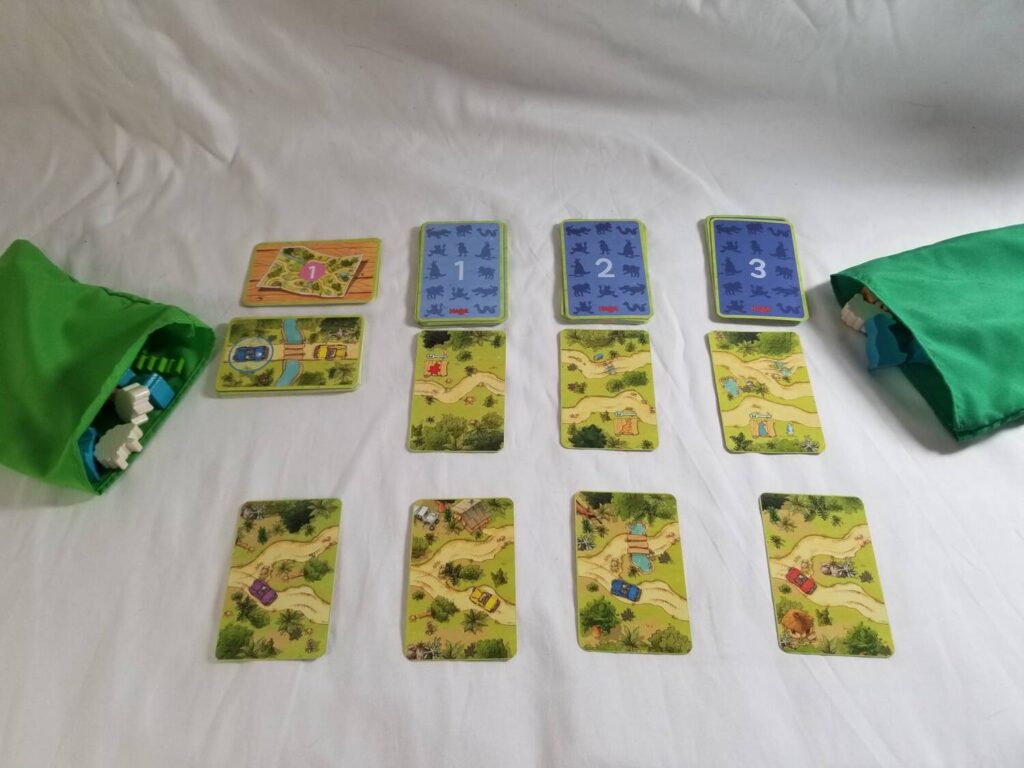
The three decks of Route cards are shuffled and placed into facedown stacks according to their card back. One card is drawn from each stack and placed face up next to the stack from which it was drawn. Remove any Duel cards belonging to colors that are not being played. Then, the deck of Duel cards is shuffled and placed face down close by. The 24 animal meeples are divided evenly and placed into the cloth bags (two of each kind of animal per bag). The Round cards are arranged in descending order and placed face up onto the table with the one on top. Then, each player is given a Start card. Finally, a starting player is selected and you’re ready to begin.
A round of play begins with a duel and continues until the last duel, and the subsequent turn, has been carried out. Flipping over the top Duel card will reveal two differently colored jungle taxis, one of which has a paw printed on its hood. This player is considered to be the challenger. They will select one of the two bags to take, passing the other to the player that has been challenged. The players are not allowed to look inside the bags.
Choosing which bag to keep and which to pass on is going to be the first of several challenges. As the game goes on and the bags begin to empty, knowing what is left in which bag will be of tantamount importance.
If you’re thinking, “That sounds like a memory element”, you would be correct. But that isn’t all.
Skills For Life: Memory games aren’t just for children. One day, when you’re sitting around the table playing Hanabi with your family, you’ll be thankful for all the time you spent with Taxi Wildlife. As you work with your family to put on a successful fireworks display in Hanabi, your memory will be put to the test in ways you never imagined.
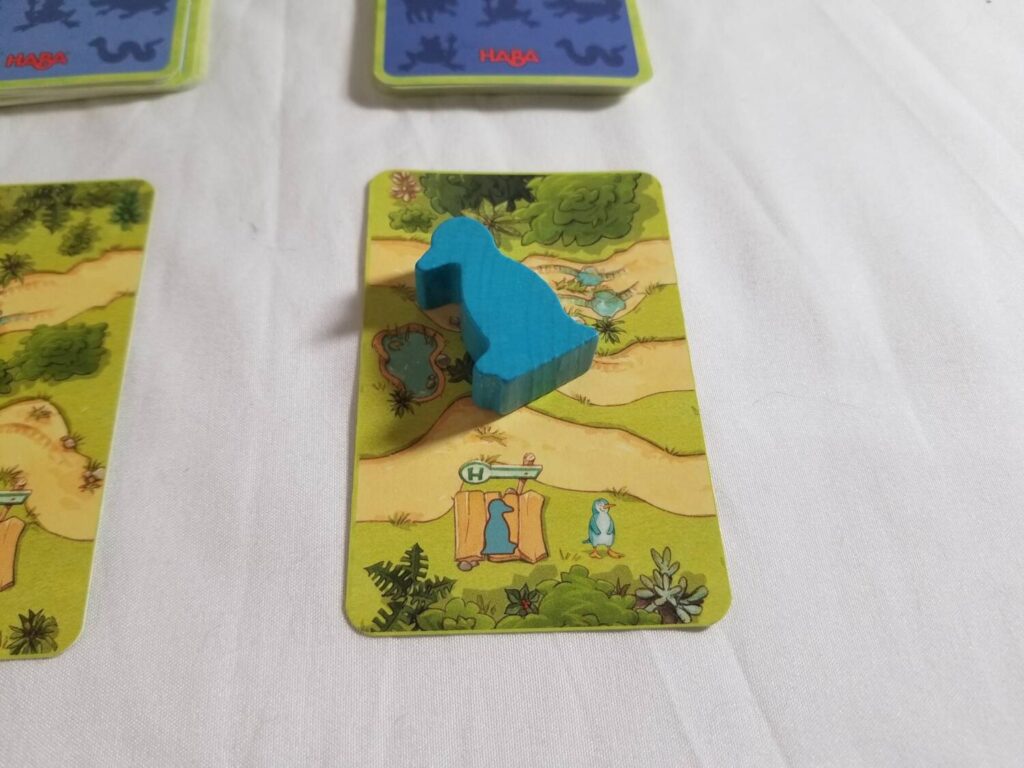
The Route cards shown all feature a bus stop with a sign bearing an icon which pertains to one of the creature types. Furthermore, some of the cards also feature the image of the creature shown on the sign.
Having received their bags, the players place their hands behind their backs, the challenger performs a countdown, and then the players simultaneously play their turns. The objective? Reach into your bag, pull out the creature matching the sign on the Route card you wish to claim (without looking in the bag), and place it onto the card before your opponent can do the same. Then you yell “Stop, Taxi!” and the duel comes to an end.
If the creature you drew from the bag matches the creature shown on the bus stop, then you get to add that Route card to your route. If it doesn’t, your opponent gets to draw a creature from their bag without the added pressure of having to win the race, and select a card of their choice. So, there’s a lot of impetus to draw a creature from the bag, but not the wrong creature. If you’re lucky enough to claim a Route card with the image of the creature on it, then you get to keep the creature. Otherwise, it gets returned to your bag.
If you’re thinking, “That sounds like a dexterity element”, you would be correct. But that still isn’t all.
Skills For Life: Getting used to seeing with your fingers will serve you and your child well when you’re gathered around the table, wearing your blackout eyeglasses, engrossed in a game of Nyctophobia. You read that right. Blackout eyeglasses. Nyctophobia Is a cooperative game played completely blind!
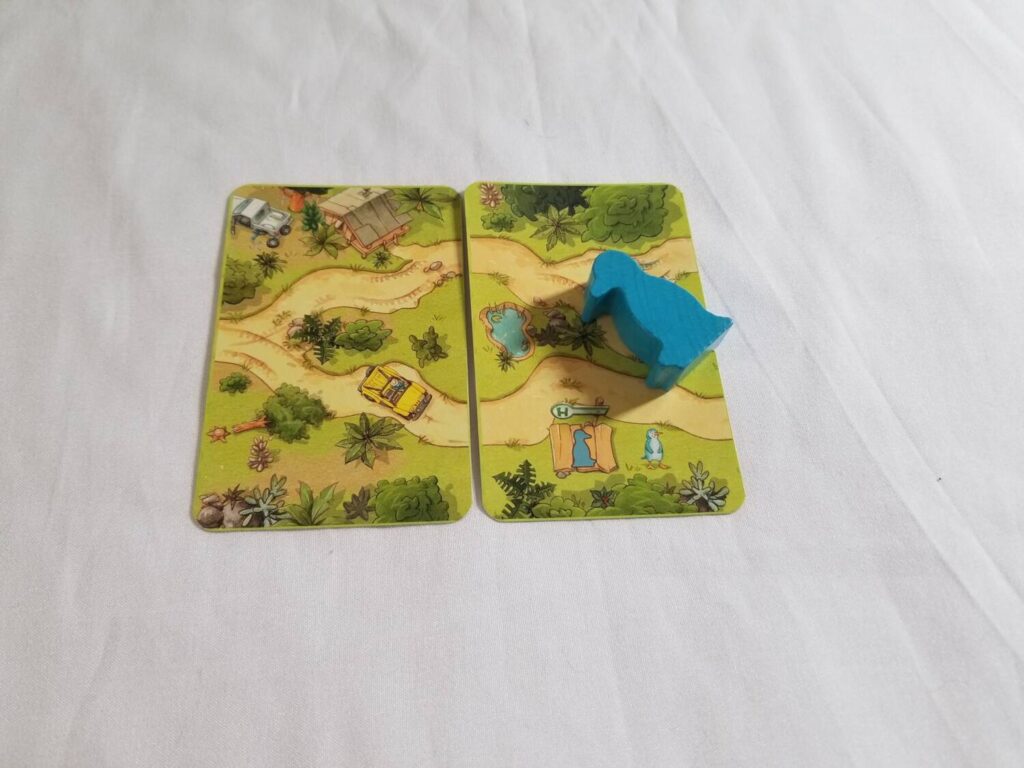
Adding a Route card to a route isn’t as easy as just winning and placing a card. The card that you win has to be able to fit. Each route card features a number of roads (1 to 3) leading off the edge of the card. These roads must match up to any cards placed into the route in the future. So, not only are the players tasked with quickly grabbing cards, but they also have the added task of quickly discerning which cards they can actually accommodate.
If you’re thinking, “That sounds like a matching element”, you would be correct. Needless to say, Taxi Wildlife may look like a simple kids’ game, but it’s not as easy as it seems. There’s a lot going on.
Skills For Life: Not every matching game has to be a kid’s game and not every adult game has to be complex. Some games, like the Spiel des Jahres award winning L.L.A.M.A. straddle that fine line with aplomb. L.L.A.M.A. requires a good deal of matching or, barring that, being able to add at least one.
The game ends after four rounds. Players receive a point for each creature collected and one point for each card in their route. The player with the most points wins.
Thoughts
I’m going to come right out and say it: this is the most challenging kids’ game that I have ever played.
Some games are challenging because they’re heavy on rules or have intricately interlaced mechanisms that take a certified NASA engineer to sort out. Taxi Wildlife isn’t that kind of game. It isn’t going to melt your brain and it isn’t going to melt your child’s either. But it is going to challenge you at every turn.
Taxi Wildlife derives its complexity, ironically, from its simplicity. Taken individually, each of the game’s mechanisms are very easy to understand. There’s nothing hard about a simple memory game. We’ve all played complex dexterity games, so simply reaching into a bag and pulling out a large animeeple from a small collection isn’t going to break the mental bank. There’s nary an adult that has never played a simple matching game in their lifetime. But, when you put those things together and ask a person to consider all three of those mechanisms at the exact same time, things start to get interesting.
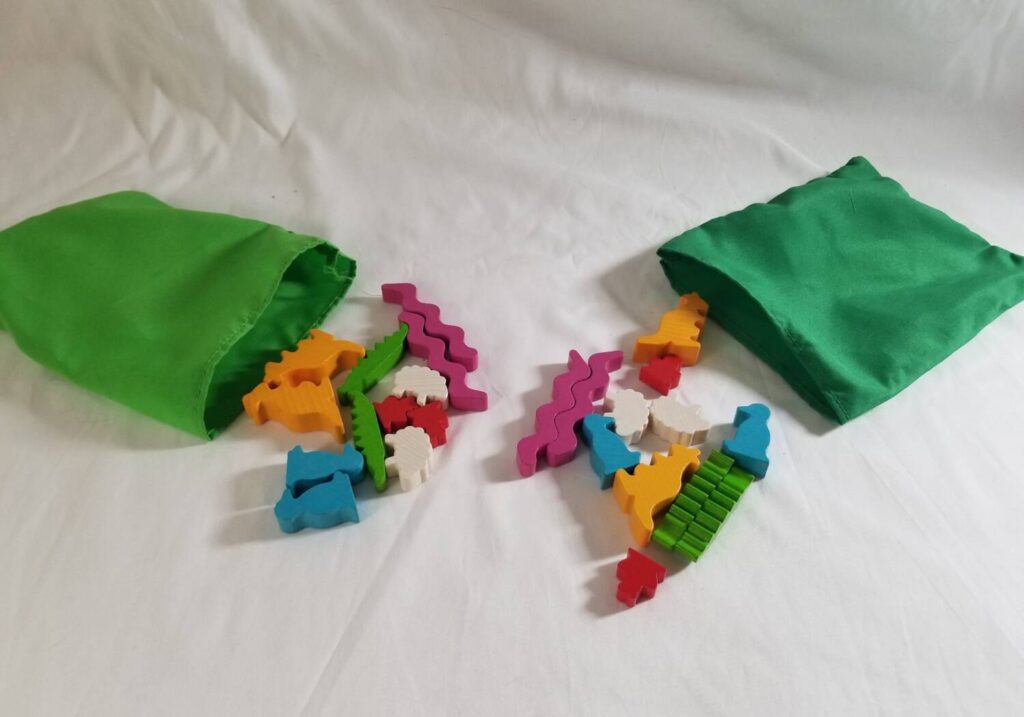
I like ‘interesting’. It keeps me invested. It keeps me wanting to play. And, that’s not something I’ve encountered in a kids’ game before. Usually, my motivation for playing one of these games is to simply spend time with my son, even if it means slogging through a game I can’t stand—I’m looking at you Catch Me! As long as he’s enjoying himself, the pain and suffering is worth it. So, it’s an odd feeling to play one of these games where my motivation is to do well at the game. Such is the case with Taxi Wildlife. This game kicks my butt. It’s literally the only game in my collection at which my five year old consistently, and legitimately, wins. If that isn’t a good selling point, I don’t know what is.
Your child can, and probably will beat you at this game, without you having to show them any mercy. That’s something both you, and they, can feel good about.


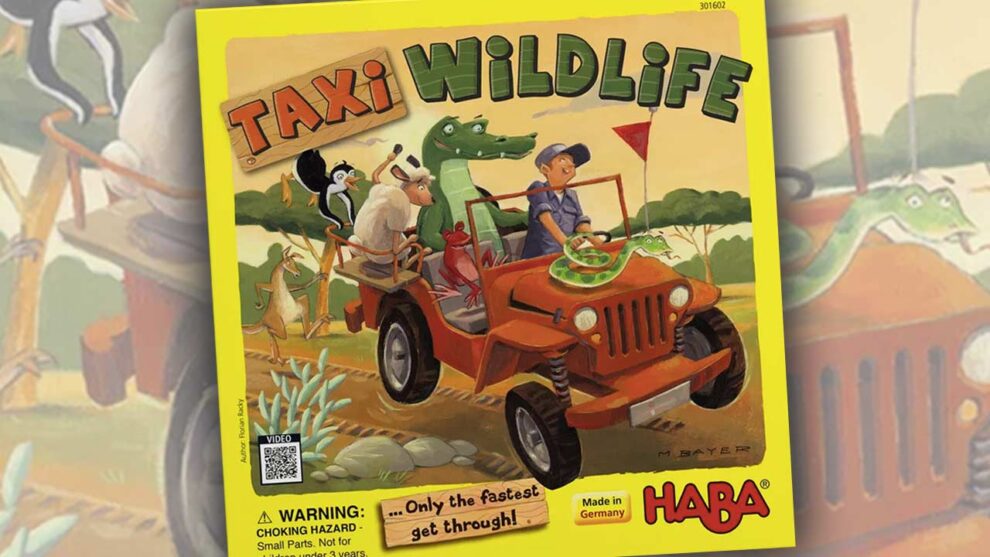








Wow — when my kids were much younger, this would have been a blast!
Unfortunately, I do not have any youngsters to play kids games with any longer. That said, I may just get this one anyway. Seems like it could be a good time.
Excellent review!